S. Gopalakrishnan
UNCA: A Neutrosophic-Based Framework for Robust Clustering and Enhanced Data Interpretation
Feb 23, 2025Abstract:Accurately representing the complex linkages and inherent uncertainties included in huge datasets is still a major difficulty in the field of data clustering. We address these issues with our proposed Unified Neutrosophic Clustering Algorithm (UNCA), which combines a multifaceted strategy with Neutrosophic logic to improve clustering performance. UNCA starts with a full-fledged similarity examination via a {\lambda}-cutting matrix that filters meaningful relationships between each two points of data. Then, we initialize centroids for Neutrosophic K-Means clustering, where the membership values are based on their degrees of truth, indeterminacy and falsity. The algorithm then integrates with a dynamic network visualization and MST (Minimum Spanning Tree) so that a visual interpretation of the relationships between the clusters can be clearly represented. UNCA employs SingleValued Neutrosophic Sets (SVNSs) to refine cluster assignments, and after fuzzifying similarity measures, guarantees a precise clustering result. The final step involves solidifying the clustering results through defuzzification methods, offering definitive cluster assignments. According to the performance evaluation results, UNCA outperforms conventional approaches in several metrics: it achieved a Silhouette Score of 0.89 on the Iris Dataset, a Davies-Bouldin Index of 0.59 on the Wine Dataset, an Adjusted Rand Index (ARI) of 0.76 on the Digits Dataset, and a Normalized Mutual Information (NMI) of 0.80 on the Customer Segmentation Dataset. These results demonstrate how UNCA enhances interpretability and resilience in addition to improving clustering accuracy when contrasted with Fuzzy C-Means (FCM), Neutrosophic C-Means (NCM), as well as Kernel Neutrosophic C-Means (KNCM). This makes UNCA a useful tool for complex data processing tasks
Bayesian optimized physics-informed neural network for estimating wave propagation velocities
Dec 21, 2023Abstract:In this paper, we propose a novel inverse parameter estimation approach called Bayesian optimized physics-informed neural network (BOPINN). In this study, a PINN solves the partial differential equation (PDE), whereas Bayesian optimization (BO) estimates its parameter. The proposed BOPINN estimates wave velocity associated with wave propagation PDE using a single snapshot observation. An objective function for BO is defined as the mean squared error (MSE) between the surrogate displacement field and snapshot observation. The inverse estimation capability of the proposed approach is tested in three different isotropic media with different wave velocities. From the obtained results, we have observed that BOPINN can accurately estimate wave velocities with lower MSE, even in the presence of noisy conditions. The proposed algorithm shows robust predictions in limited iterations across different runs.
IoT-Based Environmental Control System for Fish Farms with Sensor Integration and Machine Learning Decision Support
Nov 07, 2023Abstract:In response to the burgeoning global demand for seafood and the challenges of managing fish farms, we introduce an innovative IoT based environmental control system that integrates sensor technology and advanced machine learning decision support. Deploying a network of wireless sensors within the fish farm, we continuously collect real-time data on crucial environmental parameters, including water temperature, pH levels, humidity, and fish behavior. This data undergoes meticulous preprocessing to ensure its reliability, including imputation, outlier detection, feature engineering, and synchronization. At the heart of our system are four distinct machine learning algorithms: Random Forests predict and optimize water temperature and pH levels for the fish, fostering their health and growth; Support Vector Machines (SVMs) function as an early warning system, promptly detecting diseases and parasites in fish; Gradient Boosting Machines (GBMs) dynamically fine-tune the feeding schedule based on real-time environmental conditions, promoting resource efficiency and fish productivity; Neural Networks manage the operation of critical equipment like water pumps and heaters to maintain the desired environmental conditions within the farm. These machine learning algorithms collaboratively make real-time decisions to ensure that the fish farm's environmental conditions align with predefined specifications, leading to improved fish health and productivity while simultaneously reducing resource wastage, thereby contributing to increased profitability and sustainability. This research article showcases the power of data-driven decision support in fish farming, promising to meet the growing demand for seafood while emphasizing environmental responsibility and economic viability, thus revolutionizing the future of fish farming.
Deep generative models for unsupervised delamination detection using guided waves
Aug 10, 2023Abstract:With the rising demands for robust structural health monitoring procedures for aerospace structures, the scope of intelligent algorithms and learning techniques is expanding. Supervised algorithms have shown promising results in the field provided a large, balanced, and labeled amount of data for training. For some applications like aerospace, the data collection process is cumbersome, time-taking, and costly. Also, generating possible damage scenarios in a laboratory setup is challenging because of the complexity of the damage initiation and failure mechanism. Besides this, the uncertainties of the real-time operation restrict the online prediction accuracy with supervised learning. In this paper, deep generative models are proposed for unsupervised delamination prediction as an anomaly detection problem. In this one-class-based model, the deep learning network is trained to learn the distribution of baseline signals. In the testing phase, damage signals and unseen baseline signals are fed into the trained network to predict the state of the structure, i.e., healthy or unhealthy (delamination). It is seen that the proposed method can successfully predict the delamination with high accuracy.
Towards deep generation of guided wave representations for composite materials
Dec 13, 2022Abstract:Laminated composite materials are widely used in most fields of engineering. Wave propagation analysis plays an essential role in understanding the short-duration transient response of composite structures. The forward physics-based models are utilized to map from elastic properties space to wave propagation behavior in a laminated composite material. Due to the high-frequency, multi-modal, and dispersive nature of the guided waves, the physics-based simulations are computationally demanding. It makes property prediction, generation, and material design problems more challenging. In this work, a forward physics-based simulator such as the stiffness matrix method is utilized to collect group velocities of guided waves for a set of composite materials. A variational autoencoder (VAE)-based deep generative model is proposed for the generation of new and realistic polar group velocity representations. It is observed that the deep generator is able to reconstruct unseen representations with very low mean square reconstruction error. Global Monte Carlo and directional equally-spaced samplers are used to sample the continuous, complete and organized low-dimensional latent space of VAE. The sampled point is fed into the trained decoder to generate new polar representations. The network has shown exceptional generation capabilities. It is also seen that the latent space forms a conceptual space where different directions and regions show inherent patterns related to the generated representations and their corresponding material properties.
Real-time rapid leakage estimation for deep space habitats using exponentially-weighted adaptively-refined search
Dec 06, 2022



Abstract:The recent accelerated growth in space-related research and development activities makes the near-term need for long-term extraterrestrial habitats evident. Such habitats must operate under continuous disruptive conditions arising from extreme environments like meteoroid impacts, extreme temperature fluctuations, galactic cosmic rays, destructive dust, and seismic events. Loss of air or atmospheric leakage from a habitat poses safety challenges that demand proper attention. Such leakage may arise from micro-meteoroid impacts, crack growth, bolt/rivet loosening, and seal deterioration. In this paper, leakage estimation in deep space habitats is posed as an inverse problem. A forward pressure-based dynamical model is formulated for atmospheric leakage. Experiments are performed on a small-scaled pressure chamber where different leakage scenarios are emulated and corresponding pressure values are measured. An exponentially-weighted adaptively-refined search (EWARS) algorithm is developed and validated for the inverse problem of real-time leakage estimation. It is demonstrated that the proposed methodology can achieve real-time estimation and tracking of constant and variable leaks with accuracy.
Computing Anti-Derivatives using Deep Neural Networks
Sep 19, 2022



Abstract:This paper presents a novel algorithm to obtain the closed-form anti-derivative of a function using Deep Neural Network architecture. In the past, mathematicians have developed several numerical techniques to approximate the values of definite integrals, but primitives or indefinite integrals are often non-elementary. Anti-derivatives are necessarily required when there are several parameters in an integrand and the integral obtained is a function of those parameters. There is no theoretical method that can do this for any given function. Some existing ways to get around this are primarily based on either curve fitting or infinite series approximation of the integrand, which is then integrated theoretically. Curve fitting approximations are inaccurate for highly non-linear functions and require a different approach for every problem. On the other hand, the infinite series approach does not give a closed-form solution, and their truncated forms are often inaccurate. We claim that using a single method for all integrals, our algorithm can approximate anti-derivatives to any required accuracy. We have used this algorithm to obtain the anti-derivatives of several functions, including non-elementary and oscillatory integrals. This paper also shows the applications of our method to get the closed-form expressions of elliptic integrals, Fermi-Dirac integrals, and cumulative distribution functions and decrease the computation time of the Galerkin method for differential equations.
Inverse characterization of composites using guided waves and convolutional neural networks with dual-branch feature fusion
Apr 22, 2022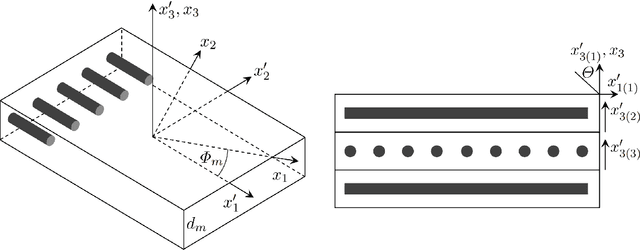
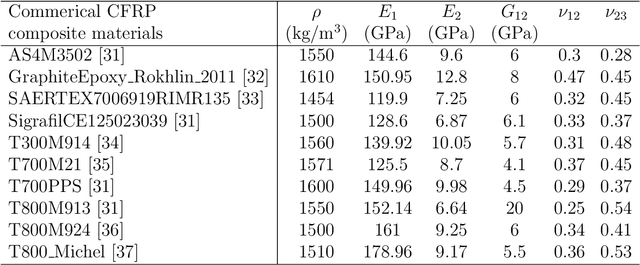
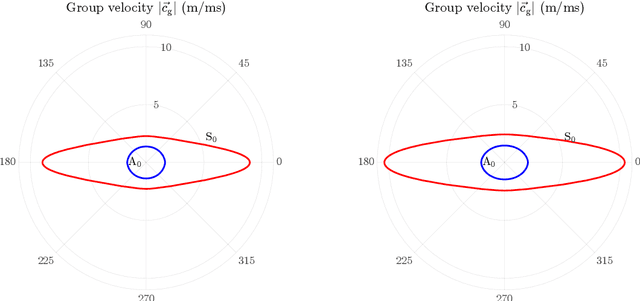
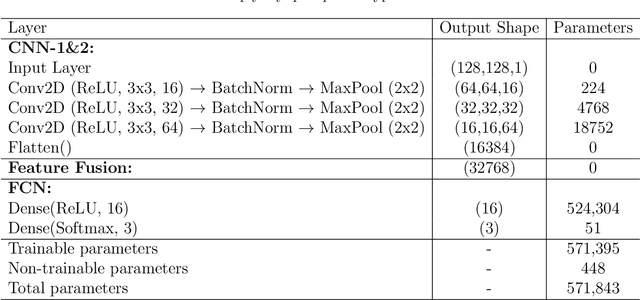
Abstract:In this work, ultrasonic guided waves and a dual-branch version of convolutional neural networks are used to solve two different but related inverse problems, i.e., finding layup sequence type and identifying material properties. In the forward problem, polar group velocity representations are obtained for two fundamental Lamb wave modes using the stiffness matrix method. For the inverse problems, a supervised classification-based network is implemented to classify the polar representations into different layup sequence types (inverse problem - 1) and a regression-based network is utilized to identify the material properties (inverse problem - 2)
Delamination prediction in composite panels using unsupervised-feature learning methods with wavelet-enhanced guided wave representations
Apr 20, 2022
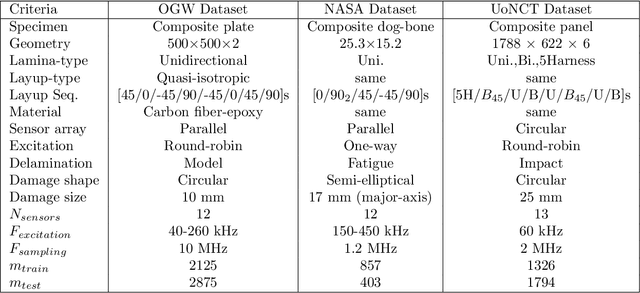
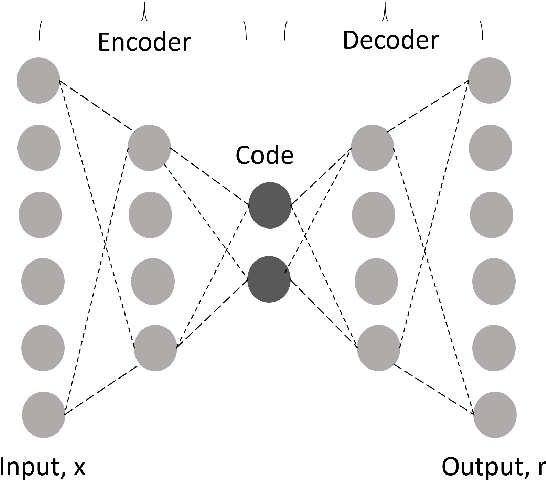
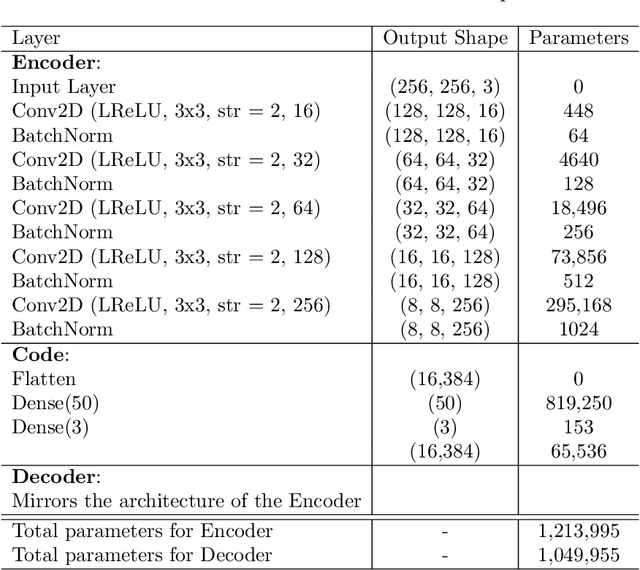
Abstract:With the introduction of damage tolerance-based design philosophies, the demand for reliable and robust structural health monitoring (SHM) procedures for aerospace composite structures is increasing rapidly. The performance of supervised learning algorithms for SHM depends on the amount of labeled and balanced datasets. Apart from this, collecting datasets accommodating all possible damage scenarios is cumbersome, costly, and inaccessible for aerospace applications. In this paper, we have proposed two different unsupervised-feature learning approaches where the algorithms are trained only on the baseline scenarios to learn the distribution of baseline signals. The trained unsupervised feature learner is used for delamination prediction with an anomaly detection philosophy. In the first approach, we have combined dimensionality reduction techniques (principal component analysis and independent component analysis) with a one-class support vector machine. In another approach, we have utilized deep learning-based deep convolutional autoencoders (CAE). These state-of-the-art algorithms are applied on three different guided wave-based experimental datasets. The raw guided wave signals present in the datasets are converted into wavelet-enhanced higher-order representations for training unsupervised feature-learning algorithms. We have also compared different techniques, and it is seen that CAE generates better reconstructions with lower mean squared error and can provide higher accuracy on all the datasets.
 Add to Chrome
Add to Chrome Add to Firefox
Add to Firefox Add to Edge
Add to Edge